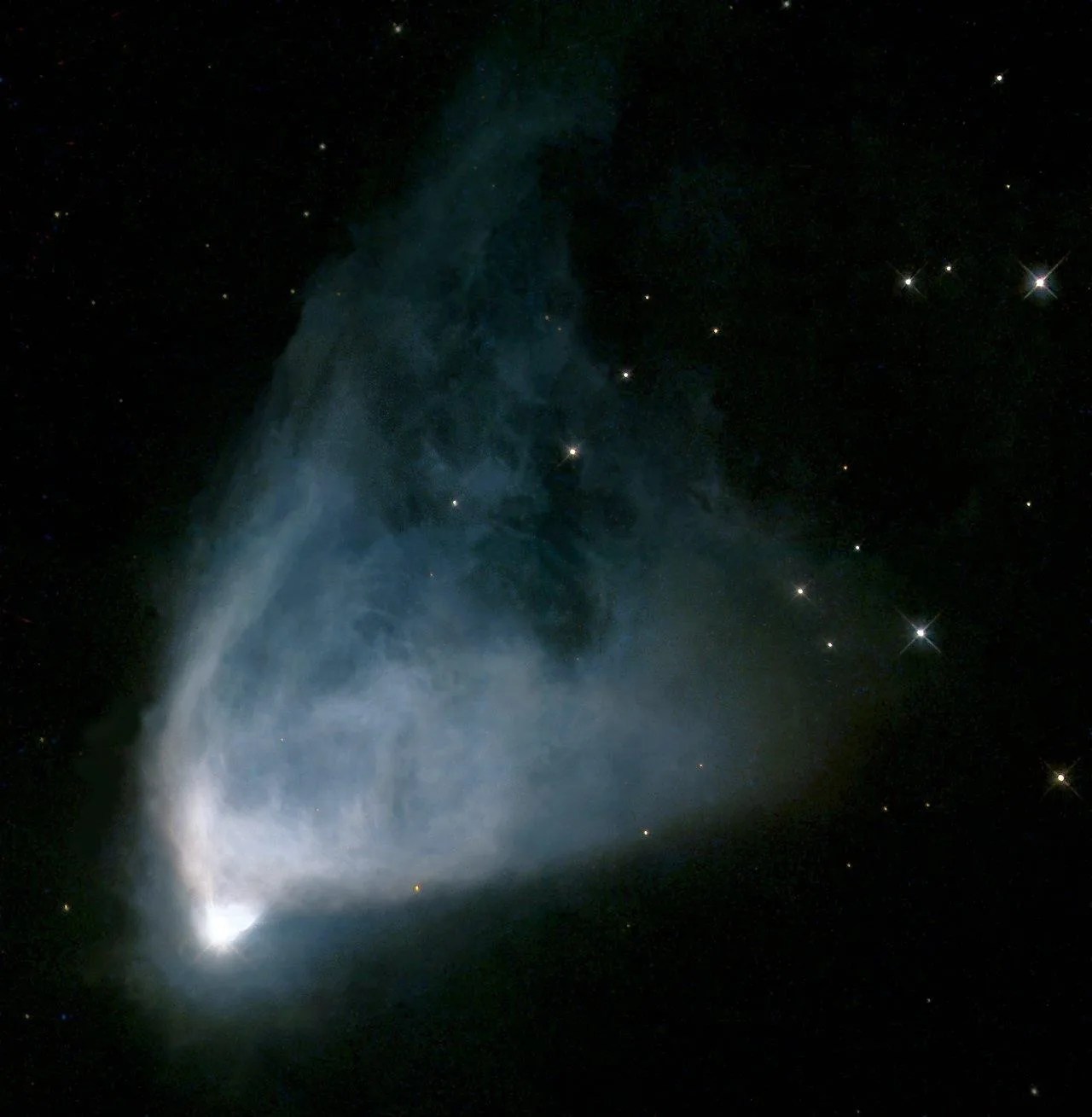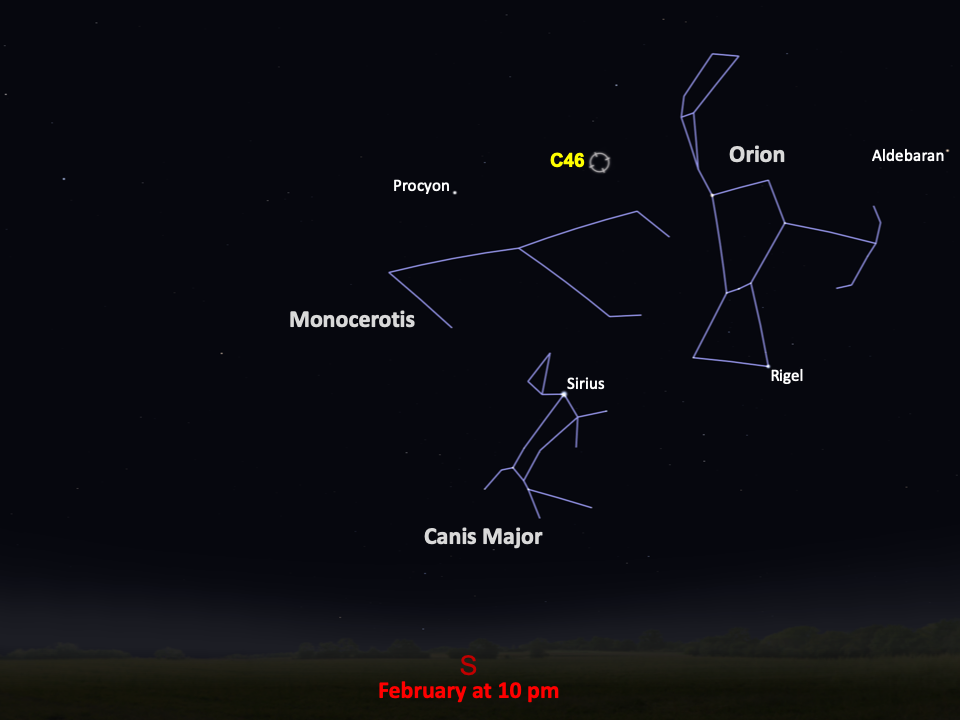Caldwell 46
This fan-shaped cloud of gas and dust shines by the light of a bright star at the bottom end of the nebula.
Distance
2,500 light-years
Apparent Magnitude
10.0
constellation
Monocerotis
object type
Reflection Nebula

In this Hubble image of Caldwell 46, a cloud of gas and dust extends from a bright star like smoke rising from a newly lit campfire. The nebula, also cataloged as NGC 2261, is lit up by the massive, young star dubbed R Monocerotis (R Mon for short). Astronomers believe that dense knots of opaque dust pass close to R Mon and cast moving shadows onto the reflecting dust seen in the rest of the nebula.
The nebula’s brightness grows and dims depending on how surrounding dust blocks R Mon, leading this unusual nebula to noticeably change its appearance over the course of just a few weeks. Caldwell 46 is often called Hubble’s Variable Nebula, named after astronomer Edwin P. Hubble, who carried out some of the early studies of this object (and who is also the namesake of the Hubble Space Telescope).
The faint nebula is about one light-year wide and lies approximately 2,500 light-years away from Earth. It was discovered in 1783 by astronomer William Herschel. More than 200 years later, the Hubble telescope’s observations of Caldwell 46 provided astronomers with a new view into the distribution of dust, noting that it forms a thin, shell-like structure around R Mon.
Hubble imaged Caldwell 46 in visible light using the Wide Field and Planetary Camera 2. Seen through the eyepiece of a modest telescope, the approximately magnitude-10 nebula will resemble a soft, triangular puff of smoke. Caldwell 46 is found in the Monoceros (Unicorn) constellation and is best viewed in moonless winter night skies in the Northern Hemisphere, or summer night skies from the Southern Hemisphere.

Glossary
Magnitude - The brightness of an astronomical object, represented by a number; bright objects have low numbers on the magnitude scale, while dim objects have high numbers.
Nebula - An interstellar cloud of dust and gas; either a location where new stars are being forged or a cloud of material ejected into space by a dying star.
Explore Hubble's Caldwell Catalog
The following pages contain some of Hubble’s best images of Caldwell objects.

Caldwell 1
Also known as NGC 188, this group of stars formed from a large cloud of gas making the stars roughly…

Caldwell 2
This shell of gas is expanding outward, away from the dying star within.

Caldwell 3
This barred spiral galaxy was first spotted by British astronomer William Herschel in April 1793 in the constellation Draco.




